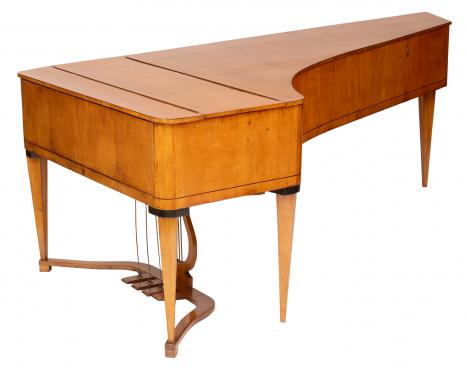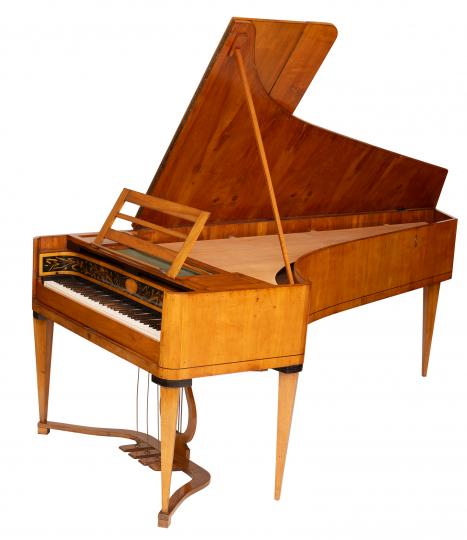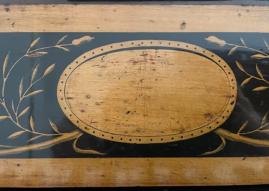grand piano louis dulcken
Munich 1815
Grand piano in Empire style
Mechanism: Viennese action
Range:
6 octaves, 73 keys (F 1 -f 4 )
Levers, Pedals:
4 pedals on a pedalboard with Lyra (from left to right): Bassoon, una corda, moderator, dampers
Stringing:
Brass: F1 – D#
Iron: E – f4
Chorality: two-choir (F 1 – e2 ); three-choir (f2 – f4)
Signature:
original signature blurred, no longer legible
Special features:
Supports for a double soundboard


Louis Dulcken
München 1815

Louis Dulcken held a privileged position as the court supplier to King Max I Joseph of Bavaria. His close connections with the musicians at the Munich court, as well as with the leading circles of nobility and court officials, brought him into close contact with the musical and aesthetic fashions of the time. As a result, an instrument from this period invites to a comparison with contemporary counterparts, such as the pianos by Deiß-Munich, Broadwood & Sons-London, or Streicher-Vienna.
In contrast to its ten-year-older counterpart in our collection, this instrument shows a gradual shift away from the design traditions of the previous century. This was enforced by the tendency to expand the range, leading to a need to reexamine and reinforce the static construction of instruments, resulting in more massive body constructions.
The body shape of this instrument already corresponds to the typical German interpretation of the Empire style of that time, with its pronounced, angular contours and the quite elaborate characteristic "foot structure" for the pedals. The subtle light-dark contrasts culminate in the elaborately designed front, where the original signature has unfortunately faded. However, it probably resembled that of the roughly contemporaneous piano in the Germanisches Nationalmuseum (MIR 1115).



